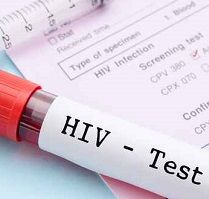HIV Epidemic Continues to Persist in Gay, Bisexual Men
Although there has been progress made in preventing and treating the human immunodeficiency virus (HIV), rates continue to be disproportionally high in gay, bisexual, and other men who have sex with men.

Although there has been progress made in preventing and treating the human immunodeficiency virus (HIV), rates continue to be disproportionally high in gay, bisexual, and other men who have sex with men.
A new study from Johns Hopkins University’s Bloomberg School of Public Health analyzed HIV rates in this population and found few successes in the last four years.
“The global epidemic of HIV in gay men is ongoing and efforts to address it remain insufficient. This must change if we are ever to truly achieve an AIDS-free generation,” lead researcher Chris Beyrer, MD, MPH, professor at the Bloomberg School and president of the International AIDS Society, said in a news release.
- Related: North America’s Role in Spreading HIV in the Western World
In 2012, the same team from the Bloomberg School put out a call to action to help stop the HIV epidemic in gay men. The researchers set targets to improve funding, prevention, and treatment. The analysis posted in The Lancet evaluated the progress made in these goals and concluded, unfortunately, not much has been made.
Initiating pre-exposure prophylaxis (PrEP), anti-HIV medication, is a big part of reducing the spread of HIV in men who have sex with men. However, it’s been difficult to get PrEP to this high-risk population. Racial and economic disparities limit access in the United States and officials in the United Kingdom has yet to cover the cost.
Gay marriage became legal in the US in June 2015, however, countries such as Russia, Nigeria, and Uganda continue to enforce anti-gay legislations — making access to PrEP more difficult and even embarrassing for patients.
“In many countries, these men are just not welcome in health clinics and the fear of discrimination stands in the way of not only treatment, but even just the testing that can go a long way toward stemming the spread of disease,” Beyrer continued.
According to the Centers for Disease Control and Prevention (CDC), gay and bisexual men made up 63% of new HIV infections in 2010 alone. Curtailing the HIV epidemic in this population is an obvious need, but executing strategies to do it is the obstacle.
“It’s a tragic situation and it’s painful that the history of AIDS is looking like its future, but that’s actually where we are,” Beyrer said.
Beyrer will be overseeing the 21st annual International AIDS Conference later this month in South Africa.
Also on MD Magazine >>> McDonald’s Worker Fired for Having HIV